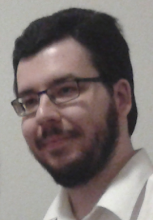Here's my fairly simple and straightforward take on Dogen's Zen. Shikantaza has two elements: body posture (taza) and mental posture (shika). The physical posture requires little elaboration (kek/hankafuza). The mental part is hishiryo, what I like to put as "neither-thinking", although the usual wording is "non-thinking", but the meaning of it is not different from what Changlu Zongze (in Zuochan Yi, the source of Dogen's Zazengi), Guifeng Zongmi (in Chan Letter (see: Zongmi on Chan, p 88)), and Dajian Huineng (or rather Heze Shenhui) identified as the very essence of Zen: no-thought (wunian/munen). Now the definition of hishiryo/munen, as provided in the Sotoshu's website (How to do Zazen): "When various thoughts arise in your mind, do not become caught up by them or struggle with them; neither pursue nor try to escape from them. Just leave thoughts alone, allowing them to come up and go away freely." And Okumura (Zazen Instruction): "That means you let go of whatever thoughts come up, and you also don’t sleep. This is the point in our sitting practice." How does that equal enlightenment (or rather confirmation-realisation)? Because it directly perceives that appearances are unobtainable (anupalabdha / fukatoku), i.e. empty.
The idea of practice-enlightenment is another instance/version of direct/sudden enlightenment, and Dogen's twist on the matter, as I see it, is rather a reaction to correct the possible mistakes of Kanna Zen and other misinterpretations that can be associated with it, hence his rejection of kensho as well.
So, is Shikantaza a shamatha practice, a vipashyana practice, both, neither? Partly, that is irrelevant, because those terms need further clarification, and then one just ends up comparing one interpretation of them with Zen. If one wants the general Zen answer, then check out the Platform Sutra on samadhi and prajna in chapter 4 (BDK ed, p 42): "It is like the light of a lamp. When the lamp exists, there is light; when there is no lamp, there is darkness. The lamp is the essence of the light, and the light is the function of the lamp. Although the names are different, in essence they are fundamentally identical. The Dharma of meditation and wisdom is just like this."
Why are there no thousands of buddhas already if merely sitting in zazen is enlightenment? The question is quite like the legendary story about Dogen's reason for travelling to China (i.e. Why practise if we're already buddhas?). And the answer is not that enlightenment needs to be enacted (at least according to me, contradicting the popular Soto idea of the matter), but because of what Zongmi and others talked of regarding "sudden enlightenment, gradual practice", that one needs to work on one's habitual proclivities and attachments. This is rather standard Buddhism, where a stream-enterer (or 1st bhumi arya-bodhisattva) has the certainty about the path and the goal, but still has to walk that path with the correct view already established.
The idea of practice-enlightenment is another instance/version of direct/sudden enlightenment, and Dogen's twist on the matter, as I see it, is rather a reaction to correct the possible mistakes of Kanna Zen and other misinterpretations that can be associated with it, hence his rejection of kensho as well.
So, is Shikantaza a shamatha practice, a vipashyana practice, both, neither? Partly, that is irrelevant, because those terms need further clarification, and then one just ends up comparing one interpretation of them with Zen. If one wants the general Zen answer, then check out the Platform Sutra on samadhi and prajna in chapter 4 (BDK ed, p 42): "It is like the light of a lamp. When the lamp exists, there is light; when there is no lamp, there is darkness. The lamp is the essence of the light, and the light is the function of the lamp. Although the names are different, in essence they are fundamentally identical. The Dharma of meditation and wisdom is just like this."
Why are there no thousands of buddhas already if merely sitting in zazen is enlightenment? The question is quite like the legendary story about Dogen's reason for travelling to China (i.e. Why practise if we're already buddhas?). And the answer is not that enlightenment needs to be enacted (at least according to me, contradicting the popular Soto idea of the matter), but because of what Zongmi and others talked of regarding "sudden enlightenment, gradual practice", that one needs to work on one's habitual proclivities and attachments. This is rather standard Buddhism, where a stream-enterer (or 1st bhumi arya-bodhisattva) has the certainty about the path and the goal, but still has to walk that path with the correct view already established.

No comments:
Post a Comment